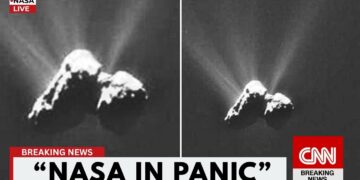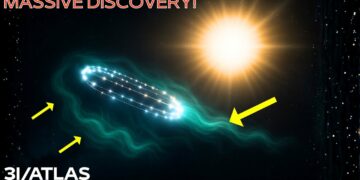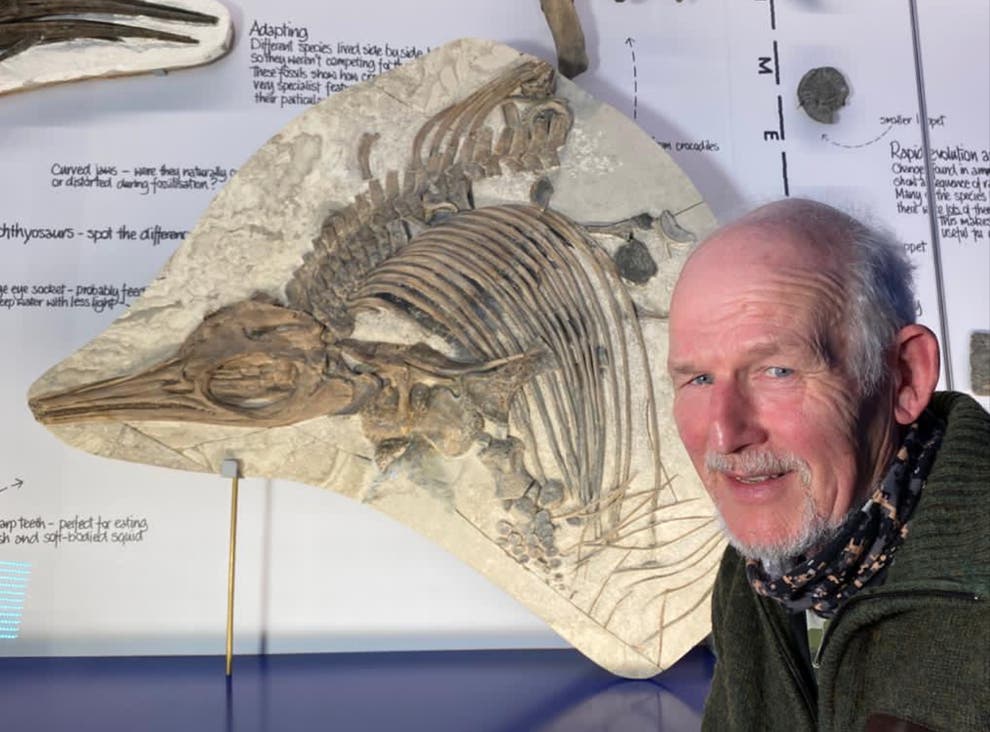In the vast, dark expanse of interstellar space, beyond the reach of sunlight, a solitary traveler drifts in silence. This is not a manned spaceship or a probe with a return mission. It is Voyager 2, humanity’s enduring messenger, launched nearly five decades ago. Long after it crossed the heliopause—the boundary where the Sun’s influence fades and interstellar space begins—most assumed it had become a quiet observer, sending faint signals from the edge of the void. But something has changed. Voyager 2 has detected something extraordinary, something that was never meant to be there.
For years, its journey through the interstellar medium was uneventful, recording only cosmic dust, magnetic fields, and silence. Then, the silence broke. A deliberate, unmistakable motion was detected in the darkness—an object moving with purpose. When scientists on Earth analyzed the anomalies in Voyager 2’s transmissions, a chilling realization emerged: what we feared might be true.
Voyager 2, having passed Neptune, Pluto, and the heliopause, was expected to drift quietly, collecting minor fluctuations in space dust and solar radiation. But instead, it detected movement—movement that defied chance. Initially, NASA’s Jet Propulsion Laboratory noticed a brief spike in plasma wave data, lasting mere seconds. The probe’s sensitive instruments, designed to measure particle density and magnetic interactions, recorded a signal with a peculiar rhythm, almost like a pattern. Engineers suspected interference or a glitch caused by cosmic rays or system degradation. After all, Voyager 2 is nearly 50 years old. But when the signal repeated with increasing strength, it became clear: this was no glitch. It was a broadcast.
Upon closer analysis, the data revealed an object approximately 500,000 kilometers from the probe, moving at a velocity inconsistent with any known natural body. No asteroids, rogue planets, or comets were expected in that region. Yet this object wasn’t merely drifting—it was tracking Voyager 2, adjusting its speed and trajectory to match the probe’s path. It moved like a predator stalking its prey, staying just close enough to remain in range.
The scientific community was shaken. Independent astronomers and military observers confirmed the findings. Plasma density readings, magnetometer anomalies, and subtle shifts in the probe’s gyroscopic data all pointed to one conclusion: Voyager 2 was not alone. Even more unsettling was a radio frequency burst embedded in the probe’s telemetry—a digital signal not originating from Voyager’s systems. When decrypted, it revealed binary strings that, when visualized, formed intricate patterns resembling glyphs—spirals, intersections, and recursive loops. These were not random cosmic waves but deliberate constructs.
AI linguists and astrophysicists analyzed the signal, and their findings were alarming: its structure suggested an intentional transmission, not from Voyager but from something else. Whether it was a warning or a message remained unclear, but one thing was certain: Voyager 2 had company, and it might not be friendly.
The discovery raised questions about Voyager 1, which had reported similar anomalies months earlier, dismissed as static. Now, those readings are being reexamined. The scientific community is divided. Some see this as proof of extraterrestrial life, while others fear it signals surveillance—or worse. The timing is particularly unsettling. As humanity advances in artificial intelligence and quantum decoding, this anomaly has emerged, as if it was waiting for us to be ready.
Adding to the mystery, radio telescopes in Chile, Australia, and South Africa began detecting faint echoes of the same distorted frequency recorded by Voyager 2. These “phantom pulses” synchronized perfectly with the probe’s transmission delays, suggesting that whatever is out there can project its presence across vast distances. The signal’s structure, with inverted harmonic frequencies of hydrogen, hinted at artificial manipulation of the universe’s most abundant element.
Further analysis revealed that the object’s trajectory defied known physics, bending as if warping spacetime itself. Its movements were reactive, responding to Voyager’s transmissions, raising the question: was it listening, learning, or hiding? Some even speculated that Voyager 2 didn’t just detect this object—it provoked it.
Conspiracy theories proliferated, fueled by a leaked report suggesting the anomaly’s energy distortions resembled theoretical warp fields. Meanwhile, the object’s magnetic flux changes indicated active manipulation of electromagnetic fields. Governments imposed media blackouts, and private observatories were quietly shut down. The question shifted from “What is it?” to “Why now?”
Voyager 2, humanity’s silent messenger, may have triggered a revelation that shatters our sense of cosmic solitude. The object, its encoded signals, and its mirrored transmissions defy our understanding of the universe. Something is out there, not light-years away but lurking in the shadows of our solar system, watching and waiting. The most terrifying realization? It chose now to respond, when humanity’s technology could finally decipher its message.
The question is no longer whether we are alone. It’s what we’ve awakened. As Voyager 2 continues to send data, the next signal could arrive at any moment, and the next discovery might redefine not just our understanding of the universe but who we are.























